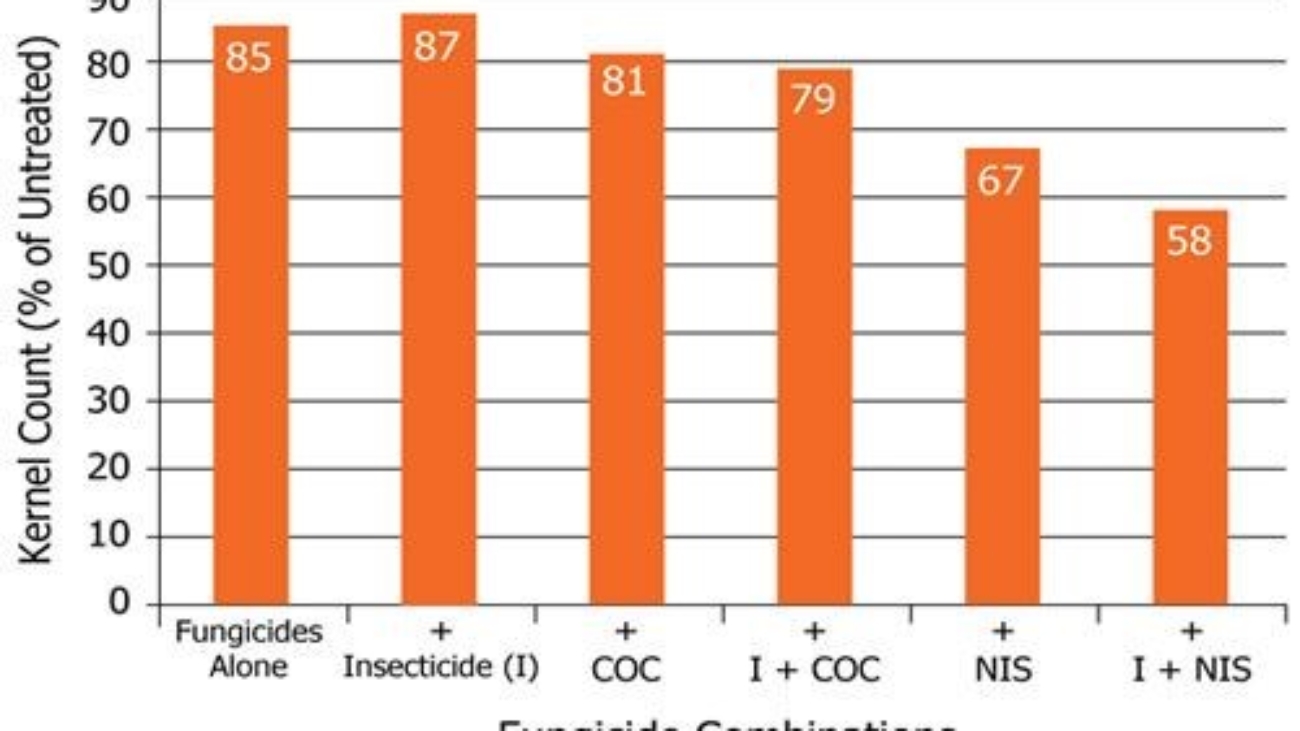Arrested ear development is not a disease but it is a physiological disorder that can have a significant impact on yield. At maturity ears have shorter cobs, fewer kernels and stunted or blunt tips. These problems have been linked back to fungicide applications made at or around V14-VT. This was a huge issued in the Midwest in 2007-2010 and through research they have linked it back to NIS products. Many spray mixtures contain adjuvants or emulsifiers in the final formulated product, and these product formulations have characteristics similar to those of nonionic surfactants. The purpose of an adjuvant is to help in the proper formulation, suspension, and application of an active ingredient with the intended purpose of getting more active ingredient to the proper location in the plant. Adjuvants are designed to have a portion of the molecule that is more polar and thus, helps with dissolving or dispersing an ingredient in water. Adjuvants also contain a lipophilic tail that helps with the solution or dispersion of active ingredient in nonpolar materials, such as plant cuticles and membranes. Each adjuvant type has a specific set of physical properties that make it best suited for a particular use. For crop protection chemicals, nonionic surfactants are often the preferred adjuvant system because these molecules have no ionic charge that would limit penetration across a plant cuticle or membrane, yet they have sufficient water solubility and “combinability” with nonpolar molecules to help these molecules get to the active site in the plant.
Getting down in the weeds a little further the research actually discovered that surfactants containing Alkyl Phenol Ethoxylate or APE were linked to this disorder. There are different schools of thought into the what is happening but Purdue study suggests that the product to move into the ear cells. Understand that V14 is the time when the ear shoots are just becoming visible. It is believed that the product washes off the leaf with rain or irrigation into the developing ear and this is the vulnerable initiation stage.

